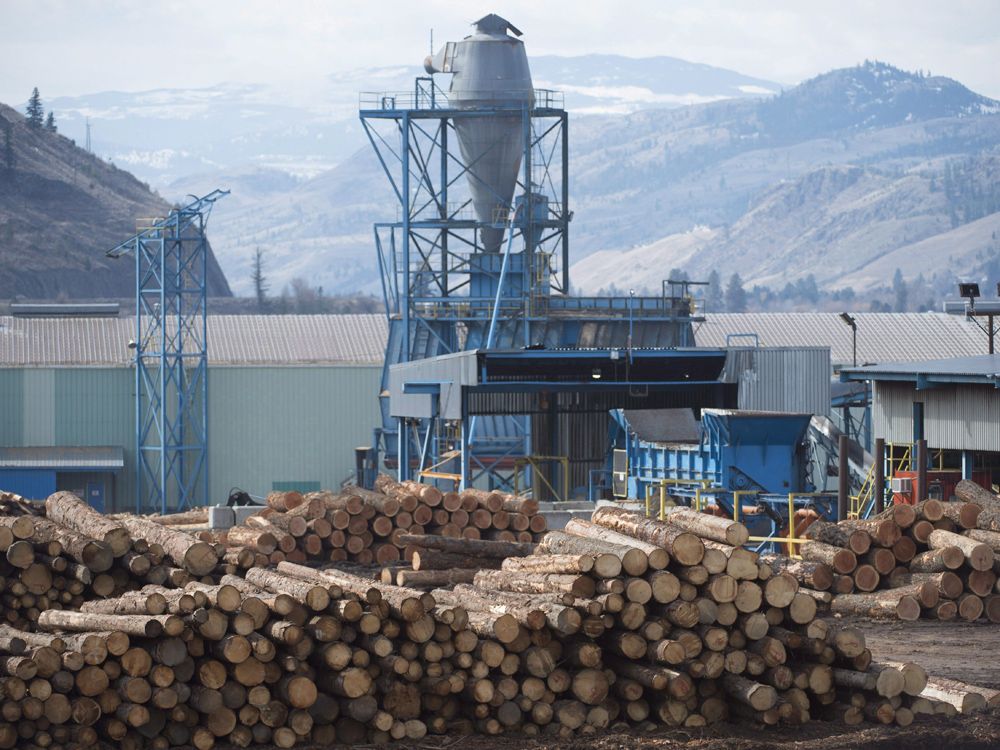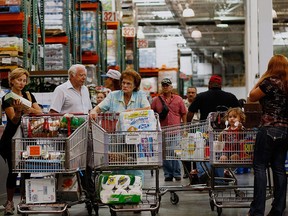The question of when food price increases will start to cool off depends on two main factors
Article content
The Financial Post takes a look at some of the biggest issues Canadians have about business and investing in 2022 in our latest Burning Questions series.
Advertisement
This advertisement has not loaded yet, but your article continues below.
Article content
One of Canada’s biggest commercial bakeries in late November sent a letter warning to grocers of an impending jump in the price of its bread. Weston Foods, which makes the D’Italiano, Country Harvest and Wonder Bread brands in Canada and is now owned by FGF Brands Inc., said the spiralling costs of wheat and labour had become too much to handle on its own.
“Despite our efforts, we are no longer able to absorb increased materials, packaging and labour inflation,” executives from the company told retailers in the Nov. 29 letter, obtained by the Financial Post.
As a result, the bakery will raise its prices at the end of February by 14.1 per cent for packaged bread and rolls, 18.1 per cent for doughnuts, 20.2 per cent for iced cupcakes and 13.8 per cent for pies.
Advertisement
This advertisement has not loaded yet, but your article continues below.
Article content
Weston Foods joins a growing number of food producers trying to raise their prices to retailers in the face of a seemingly endless stream of complications, from weather catastrophes that have increased commodity costs, to higher fuel costs and clogged ports that have driven up transportation costs.
For example, Lactalis Canada Inc. — part of the French dairy giant that produces Beatrice milk, Astro yogurt and other brands — will implement a “non-negotiable” price hike of up to 15 per cent in February, in response to higher energy, labour, packaging and transportation costs as well as a historic increase in the price paid to Canadian farmers for their milk.

As the hikes continue, the question for many consumers as they shoulder higher levels of price inflation is: How long will this last?
Advertisement
This advertisement has not loaded yet, but your article continues below.
Article content
It’s worth noting that when suppliers try to implement price increases on grocers at the wholesale level, it doesn’t automatically translate into higher prices for consumers.
The largest Canadian grocer, Loblaw Cos. Ltd., recently boasted it was negotiating hard with suppliers to beat back the increases “so that we offer our customers the best value.” Quebec-based Metro Inc. suggested during its latest earnings call that it could consider absorbing price increases and taking thinner margins to stay competitive.
“They don’t want to put a stake in the ground on pricing if it’s something that’s going to prove to be transitory,” Barclays analyst Karen Short said in an interview last month. “You could have one month where farm products are up 40 per cent and the next month they’re only up 10. The volatility is extreme.”
Advertisement
This advertisement has not loaded yet, but your article continues below.
Article content
But a series of new reports confirm some of the increases are getting through to consumers, and will continue doing so in 2022.
Statistics Canada, in its latest consumer price index report, found grocery bills in November increased by 4.7 per cent compared to last year — the highest increase since 2015.

Another study predicted food inflation will hit five to seven per cent next year, which would increase the annual household food budget for a family of four by $966, according to the Food Price Report released this month by Dalhousie University, University of Guelph, University of Saskatchewan and University of British Columbia.
“The grocers will only be able to absorb so much,” said University of Guelph professor Simon Somogyi, who co-authored the report. “Retailers may be able to loss lead in some products, but only in the very short term. It’s going to be passed on.”
Advertisement
This advertisement has not loaded yet, but your article continues below.
Article content
Typically, he said, prices go up due to a problem in one specific area of the supply chain.
“It might be the farm. It might be processing. It might be retailing. It might be restaurants,” he said.
The grocers will only be able to absorb so much … It’s going to be passed on
Simon Somogyi
This time, however, every stage of the food chain is facing higher costs. One major factor is that labour shortages have intensified in the pandemic, reaching an all-time high of 912,600 in the third quarter of 2021, Statistics Canada reported on Dec. 20.
The biggest price increases in 2022 are expected to come in dairy (six to eight per cent), bakery products (five to seven per cent), vegetables (five to seven per cent) and restaurants (six to eight per cent), according to the Food Price Report.
“The big question is how long does this inflation spike last?” Somogyi said.
Advertisement
This advertisement has not loaded yet, but your article continues below.
Article content

It could take several more months, said Claire Fan, an economist at RBC Economics. The bank is currently forecasting food price inflation to stay around five per cent for the first half of next year before decreasing to 3.5 per cent at the end of 2022.
“We expect the level of price growth to stay elevated at least for the next couple of months before tailing off to a more moderate, but still above-target level in 2022 as problems with labour shortages persist,” she said.
The year-over-year increase in grocery bills last month was on par with the overall 4.7 per cent increase in the consumer price index, which is a sign inflation isn’t specific to the food industry, said Kelleen Wiseman, director of the Master of Food and Resource Economics program at the University of British Columbia.
Advertisement
This advertisement has not loaded yet, but your article continues below.
Article content
“It’s a lot. For sure it is. Never trivialize what someone on a fixed income faces when their cost of food goes up that amount. Of course that’s important,” said Wiseman, a co-author of the Food Price Report. “But what I’m saying is that the reason for the prices going up is not a food reason. It’s the overall price of inflation. All prices are going up.”
Somogyi said the question of when food price increases will start to cool off depends on two main factors.
“If the cost of fuel decreases and the Canadian dollar remains relatively strong,” he said, “then food prices will start dropping.”
Those aren’t the only two factors driving up food prices, but they’re the least permanent.
“High labour costs are going to be around forever,” he said. “But the fuel part is really screwing the industry. And that’s impacting everything that they need, from farms needing machinery and fertilizer, and the movement of product all throughout the chain. Everything.”
Financial Post
• Email: jedmiston@postmedia.com | Twitter: jakeedmiston
Advertisement
This advertisement has not loaded yet, but your article continues below.
Burning Questions: When will my grocery bill stop spiralling?
2021-12-24 11:00:30






